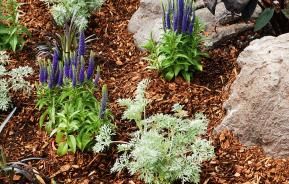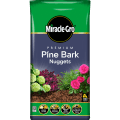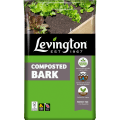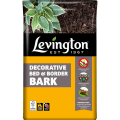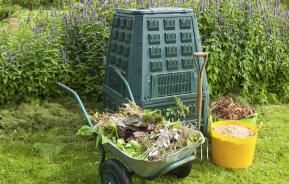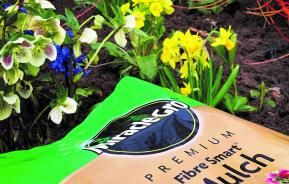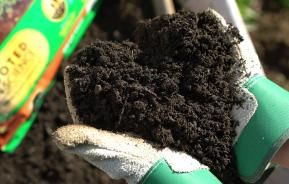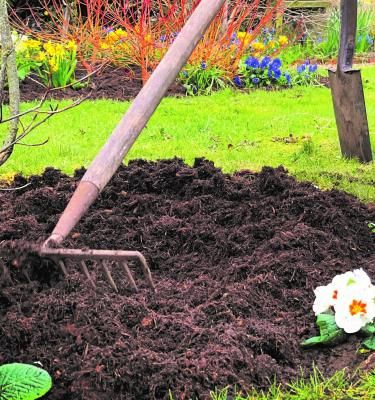
Making your own mulch in autumn
A guide to making garden mulch
Within our gardens, the soil is incredibly important because this is where we grow plants, whether that’s fruit, veg, herbs, ornamental perennials, trees, or shrubs. So, throughout the year, it’s vital to maintain the soil to ensure it has all it needs to supply nutrients to the plants to help them thrive.
Mulching not only improves the quality of the soil, but also has many other benefits too. Adding mulch smothers weeds and helps to retain moisture. Meanwhile it stops the soil from drying out in summer and keeps it warm over winter to protect roots from frost.
Mulching materials
Any material that you apply to the soil surface to help retain moisture, insulate, and provide nutrients is a mulch, but there are some materials that are more effective for some plants than others. The materials used tend to be ones like compost or bark chippings. These choices will break down and subsequently release nutrients into the soil.
For use around flower beds and borders, a mulch like Peat Free Fibre Smart™ Mulch will do the trick. Applying 5cm thick of the mulch and watering in will release organic nitrogen to the soil, whilst protecting the roots, supressing weeds, and aiding moisture retention. For use all year round, the mulch offers constant and continuous benefits throughout the seasons.
Bark and wood chippings are another popular mulch because they look great too, adding to the aesthetics of the garden. There are many grades and sizes of chippings, but bear in mind that smaller chippings will rot down quicker. You can get Levington® Water Saving Decorative Bark which is a fantastic addition to low maintenance gardens, as well as being a useful element in the garden it has the added bonus of smelling great with the natural pine fragrance. Composted bark can look more natural than pure bark chips because it has already begun the process of rotting down.
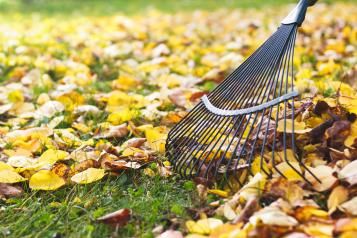
Autumn leaves
When the leaves turn brown and start falling from the trees, you’ll want to keep removing them off your lawn, so your garden doesn’t become inundated with a sea of leaves. Not only will it impact the appearance of your garden, but thick layers of leaves can damage the grass because it decreases the amount of light that can get to it.
To create your own leaf mould to use as a mulch, simply collect the fallen leaves and place them into a hessian bag to ensure moisture can still get in. Then, leave the bag in the shed or garage for up to two years and you’ll have a free and eco-friendly mulch to add to your beds and borders.
Of course, you can make mulch from any fallen leaves, however beech, oak, and hornbeam are ones that break down the fastest. On the other hand, horse chestnut and sycamore leaves take longer to breakdown, but mixing the different types of leaves together can speed up the process.
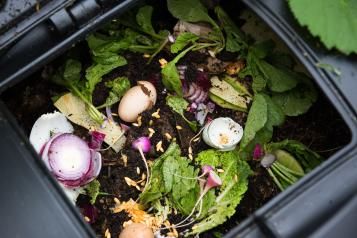
Home composting
Garden compost is a great organic mulch. Compost or well-rotted manure will look very natural in your borders, and it’ll also help to suppress new weeds from sprouting up. As with other mulches, the extra layer of insulation helps during cold snaps. Therefore, building a compost heap or investing in a compost bin is worthwhile.
Most household waste that breaks down naturally can be added to the mix, including fruit and vegetables peelings, stale bread, coffee grounds, ripped up cardboard, crushed eggshells, tea bags, and vacuum cleaner dust. As long as there is the right balance of brown waste which is high in carbon and green waste which is high in nitrogen the materials will decompose to create a lovely, earthy compost to be used as a mulch on plants.

Go green with green manures
When it comes to caring for your soil through autumn and into winter, green manures are a fantastic place to start. Once crops have been harvested from the fruit and veg plot, plant green manures rather than leaving the soil bare and open to the elements for the wind and rain to wash away the nutrient rich top level of the soil. Green manures are fast growing crops that enhance soil quality and keep it covered over the autumn and winter months too. The nutrients from the soil are taken up by the fast-growing plants and held inside. Then, when it’s time for the other plants to be grown, the green manure can be dug into the soil or used as a mulch on top.
Mulching is an important task in the garden, and it can be done year-round to keep moisture in during long dry spells, keep weeds at bay, and help to insulate plants over winter. Making your own mulch in autumn means you can have a supply of organic matter to keep your plants growing happily and healthily.

